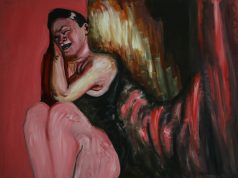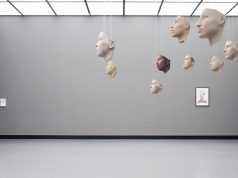Street art comes to Odessa as a new generation of young urban reformers think about integrating luscious murals and street honed non conformist artisanship into sometimes gray and monotone city spaces.
In the broadest sense, street art is created by non-traditional artists who seek to interact with an audience beyond that of museum and gallery visitors. Street art is directed at each and every person who passes it. And the creation of street art is accessible to anyone, not only those with artistic education or experience, which makes it famously democratic. Many people wish to express themselves through a can of spray paint and there is a whole culture surrounding this art form which comes out of graffiti culture of the 70’s and 80’s. Artists would gather at old ports and abandoned warehouses and in the train tracks late at night and they would cover every surface with spray paint. This subversive activity soon became fashionable and would draws crowds of young people.
Since that time graffiti has come out of the streets and into the gallery space and has been professionalized and integrated into the mainstream art market in many ways. For some practitioners it remains a cherished hobby, for others a profession and some manage to turn this art form into a successful business and integrated street art into the landscape of a thriving city. This is a a legacy that we have received from Western Europe and the United States— and Odessa would do well to integrate this colorful art form into the urban fabric of the city.
If at first glance, it seems strange that the work of street artists has caught the attention of businesses, but the secret is simple: large works of street art attract attention to neglected buildings or even to entire blocks, which, having drawn public interest, can be turned into a profitable places of business for investors. It is unsurprising then that almost all of the major street art festivals in America have a commercial objective. Street art has been a powerful tool for the revitalization of cities and downtown areas the world over. Most notably with instances of troubled industrial areas such as Soho in New York being transformed into one of the most prestigious and hip areas of the city by bringing in artist and creating workshops.
There is little doubt that we are able to to follow a similar strategy in Odessa and Ukraine more generally, and if we begin taking concrete steps in that direction, the urban landscape of the city will be revitalized and made fresh. There is plenty of room for implementing wild and beautiful murals all over a city that boasts an unparalleled artistic past. The recent completion of the “Babel House” project at 17 Rishelevska Street by the “Peach” studio, in the courtyard of the building in with Isaac Babel himself had lived was a tremendous success. Walking through the gates of the courtyard one is transported into a fairy tale land in a nostalgic Odessa of long ago. A similar if no less ambitious project, the painted mural walls of the three-story “Geneva City” hotel, in which the literary and artistic characters of city lore mingle together at breakfast, have turned these buildings into true works of art and brought both aesthetic improvement and commercial success to their owners.
When it is done well, and with aesthetic merit, street art can carry with it a no less important social element to complement aesthetic arguments. In this regard, Odessa has every chance to emerge as a pioneer (as the city has always been on the cutting edge of social development). Having renewed the façade of the “Chabad” Hebrew school and decorated the new sports complex of Gymnasium No. 4, the artists at studio “Peach,” led by myself, have a launched a project to transform Odessa’s schools and improve the appearance of the city’s educational institutions.
This project was given the ambitious title “School Art Reform,” and the name reflects the scale of the task which the young artists have established for themselves. Judge for yourself dear reader: every day, tens of thousands of young Odessan citizens enter their school and sit at their desks. Here, they are not only learning to read and write but they are also forming their character and thus the character of our future. The future of our country and our world depends on the quality of their education. In the view of both artists and psychologists, a bright, clean and artistically-designed school is no longer simply a destination in a student’s daily routine, but instead a place to be enjoyed and something to be looked forward to.
Most of the facades of Odessa’s schools are unattractive and need to be updated. I remember how, in my own childhood, I didn’t want to go to school because of how ugly the building was. Our task is to motivate children to go to school with joy, and teachers to welcome each day of teaching and thus to create a new cultural contexts and standards for young Ukrainians.
Alexei Shkurat holds a Masters degree in economic and is proud to be a fifth generation Odessite.




































